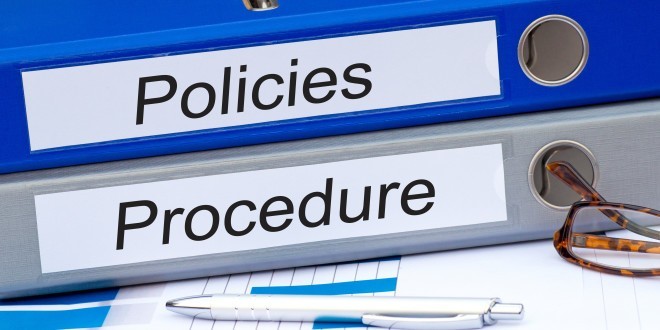Creating a Corporate Policies and Procedures Manual is a vital process to clarify the rules and procedures that company employees must follow across various administrative and operational areas. Based on that, here are the sequential steps for building a comprehensive Corporate Policies and Procedures Manual:
1. Planning and Preparation
1. Define Objectives and Scope:
-
Identify the main objectives of the manual by Define strategies such as clarifying key policies and procedures in areas like Human Resources, Finance, Safety, and Operations.
-
Define the scope of the manual — the departments and areas the Corporate Policies and Procedures Manual will cover.
2. Define the Structure of the Manual:
-
Organize the manual into chapters or sections based on key areas, such as:
-
A section for Human Resources
-
A section for Finance
-
A section for Occupational Health and Safety
-
A section for Operations and General Procedures
-
2. Analysis and Evaluation
1. Gather Information:
-
Collect the necessary information from various internal sources, such as existing policies, current procedures, and operational manuals.
2. Analyze and Assess Needs:
-
Identify any gaps in current policies and procedures.
-
Define new and required needs to enhance performance and ensure full compliance.
3. Drafting Policies and Procedures
1. Draft Policies:
-
Write the general policies and guiding principles that define employee behavior and practices in each area.
-
Emphasize the objectives and standards the policies should align with.
2. Develop Procedures:
-
Write detailed, step-by-step procedures to properly implement each policy.
-
Include practical details such as daily tasks, responsibilities, and operational steps.
4. Review and Approval
1. Expert Review:
-
Have the draft of the Corporate Policies and Procedures Manual reviewed by specialists in each field, such as accountants, HR experts, and safety professionals.
2. Final Approval:
-
Obtain final approval from company management or the designated authority before publishing the manual for use.
5. Implementation and Distribution
-
Distribute the Corporate Policies and Procedures Manual to all employees and ensure they understand the contents.
-
Provide training on how to implement the manual properly and ensure adherence to its policies and procedures.
6. Monitoring and Evaluation
-
Conduct periodic reviews of the Corporate Policies and Procedures Manual to ensure it remains up to date and aligned with internal and external developments.
-
Make necessary improvements based on regular evaluations.
7. Responding to Changes
-
Update the Corporate Policies and Procedures Manual in response to any changes in policies, laws, or operational conditions.
Additional Notes:
-
Policies and procedures should be written in a clear and simple manner to ensure ease of understanding and application.
-
It’s recommended to include practical examples and templates to support real-world implementation, such as standard policies in line with local regulations (e.g., Saudi Arabia).
In Conclusion
By following these steps, companies can build a comprehensive Corporate Policies and Procedures Manual that boosts work efficiency and ensures full compliance with both internal standards and external regulations.

